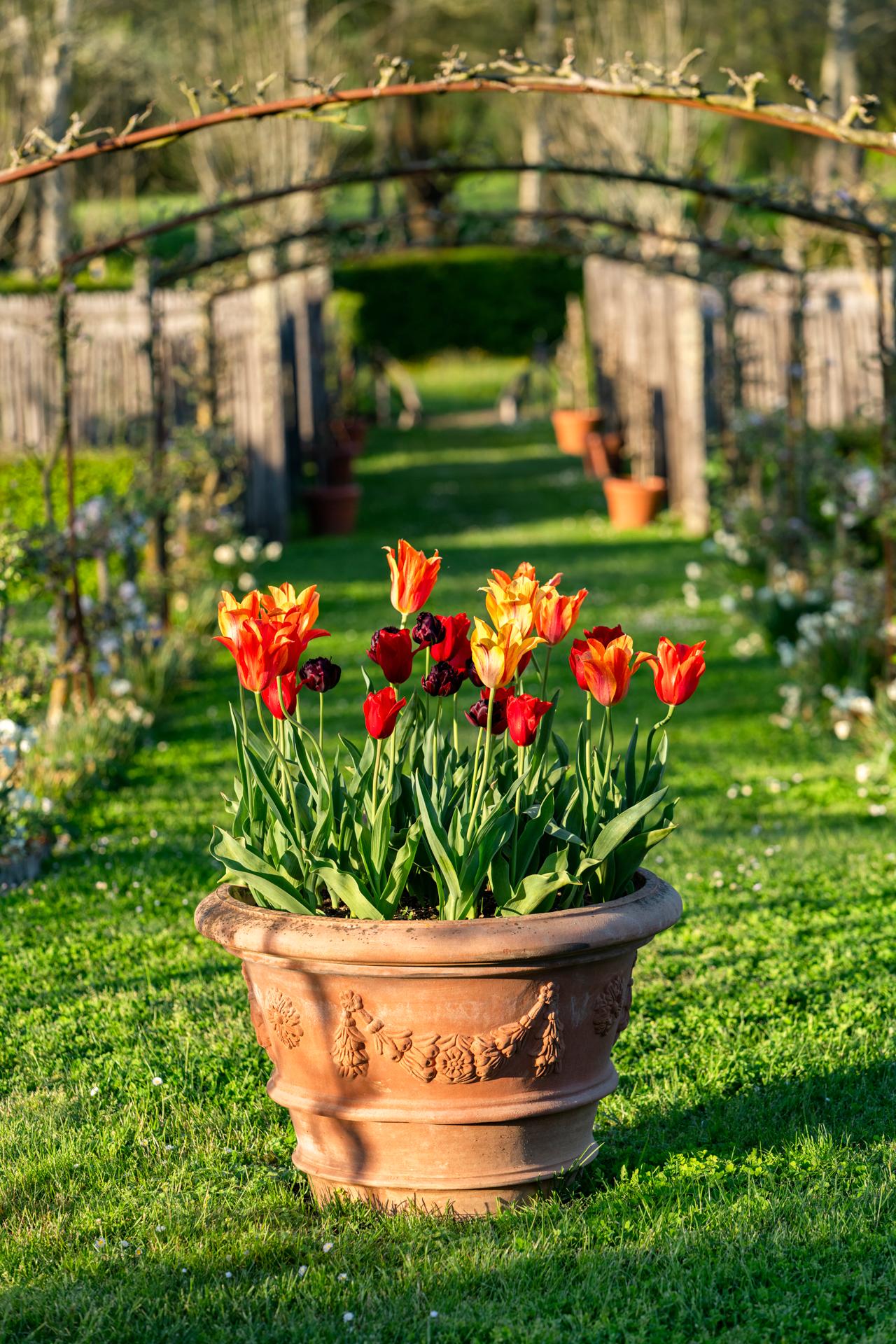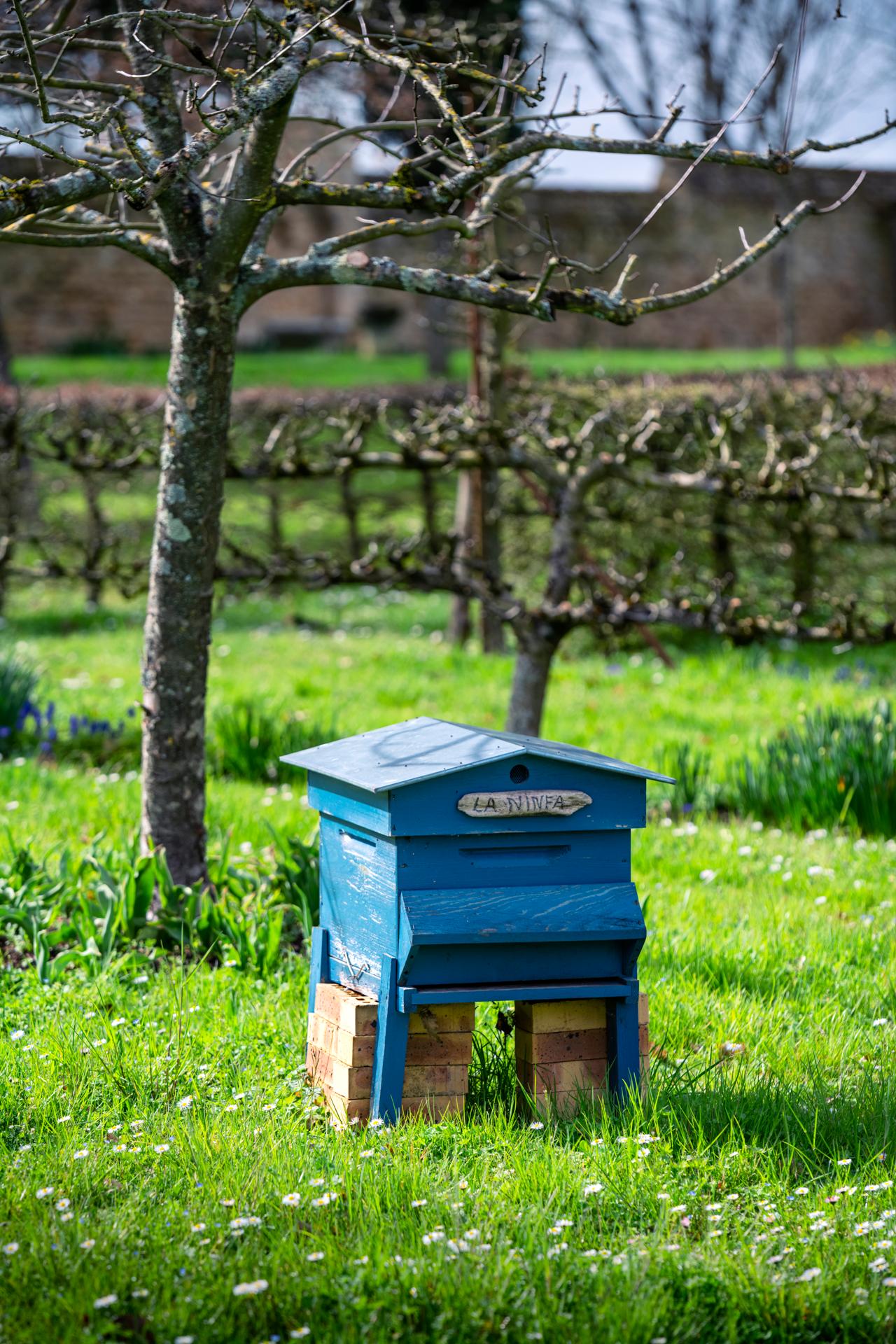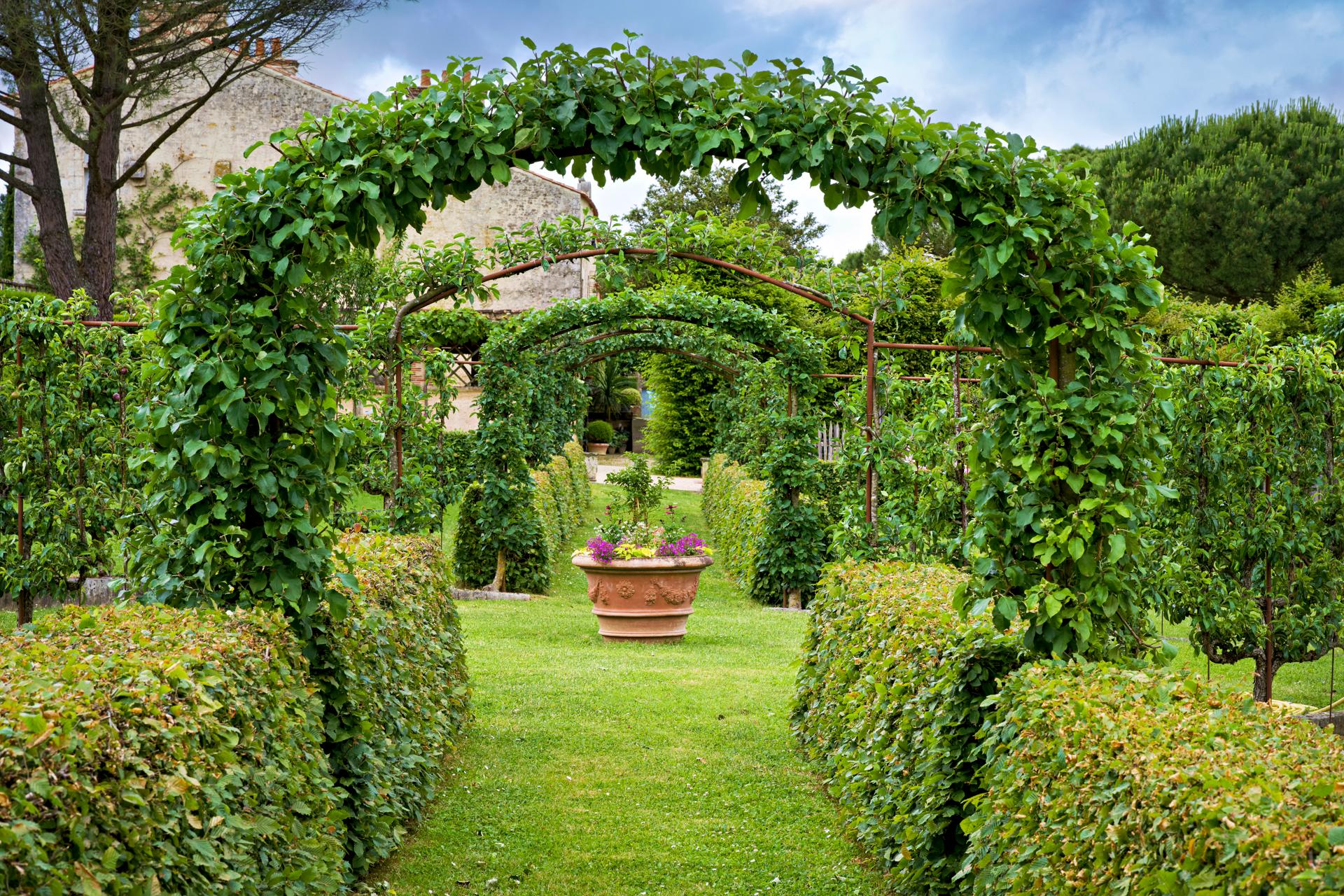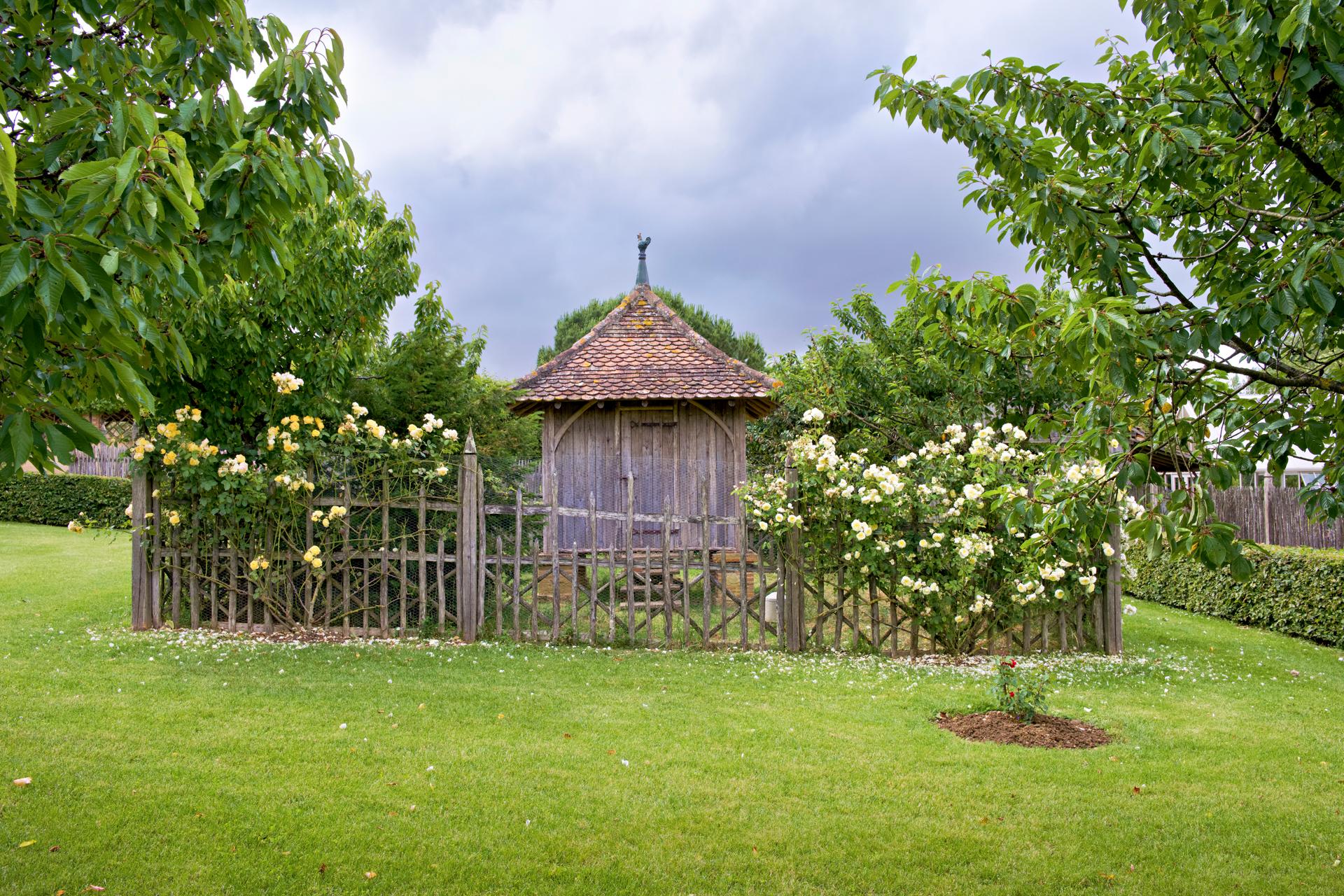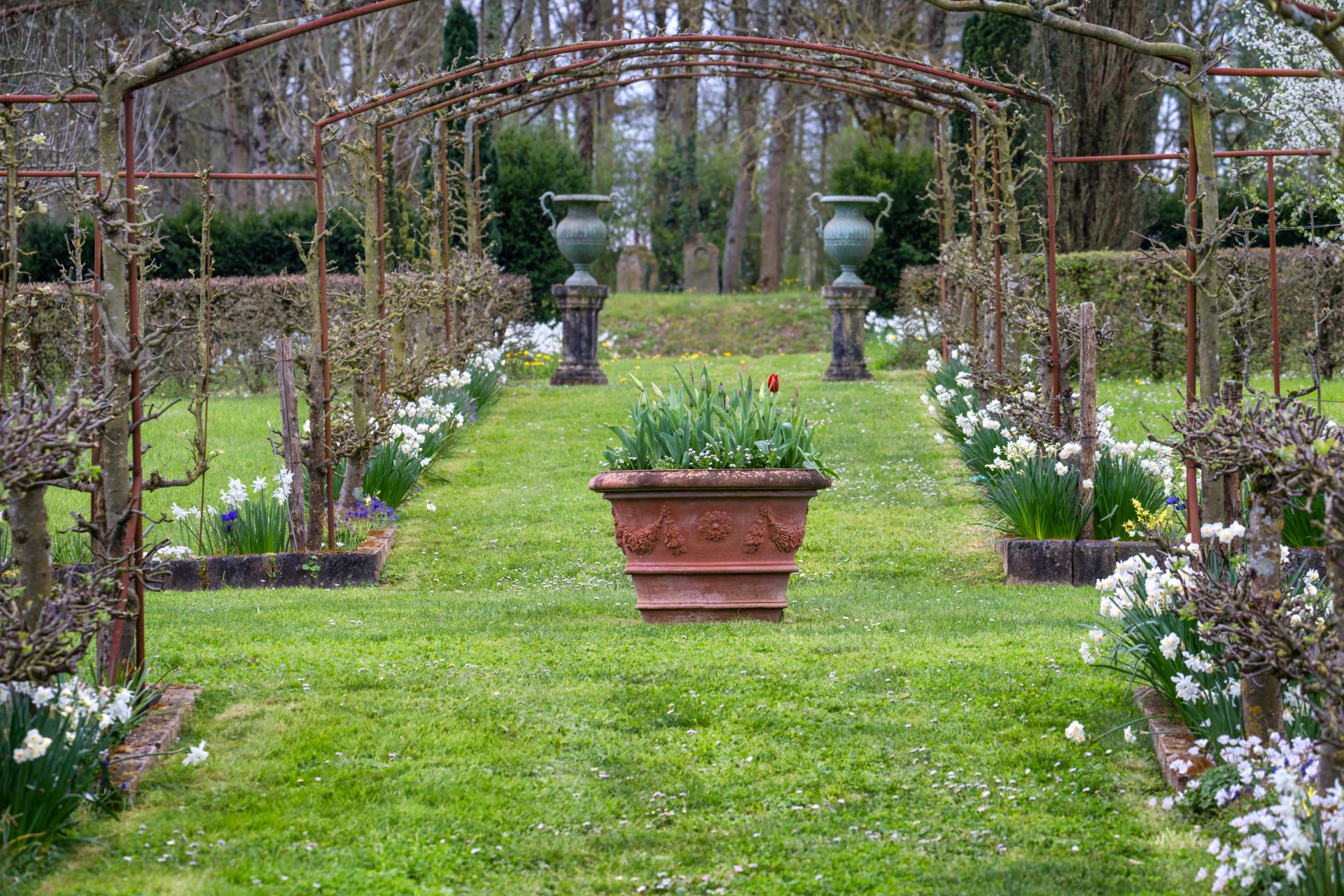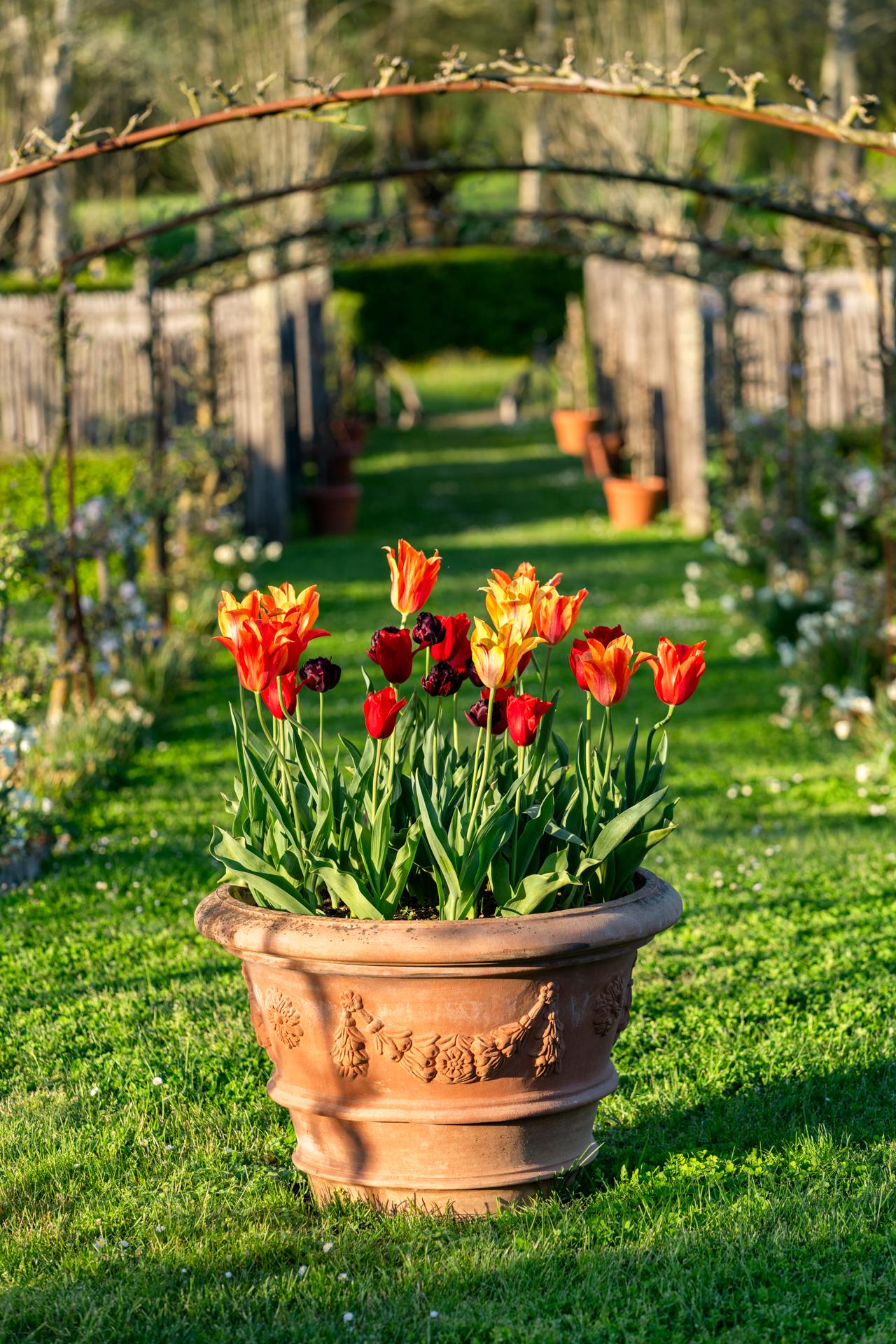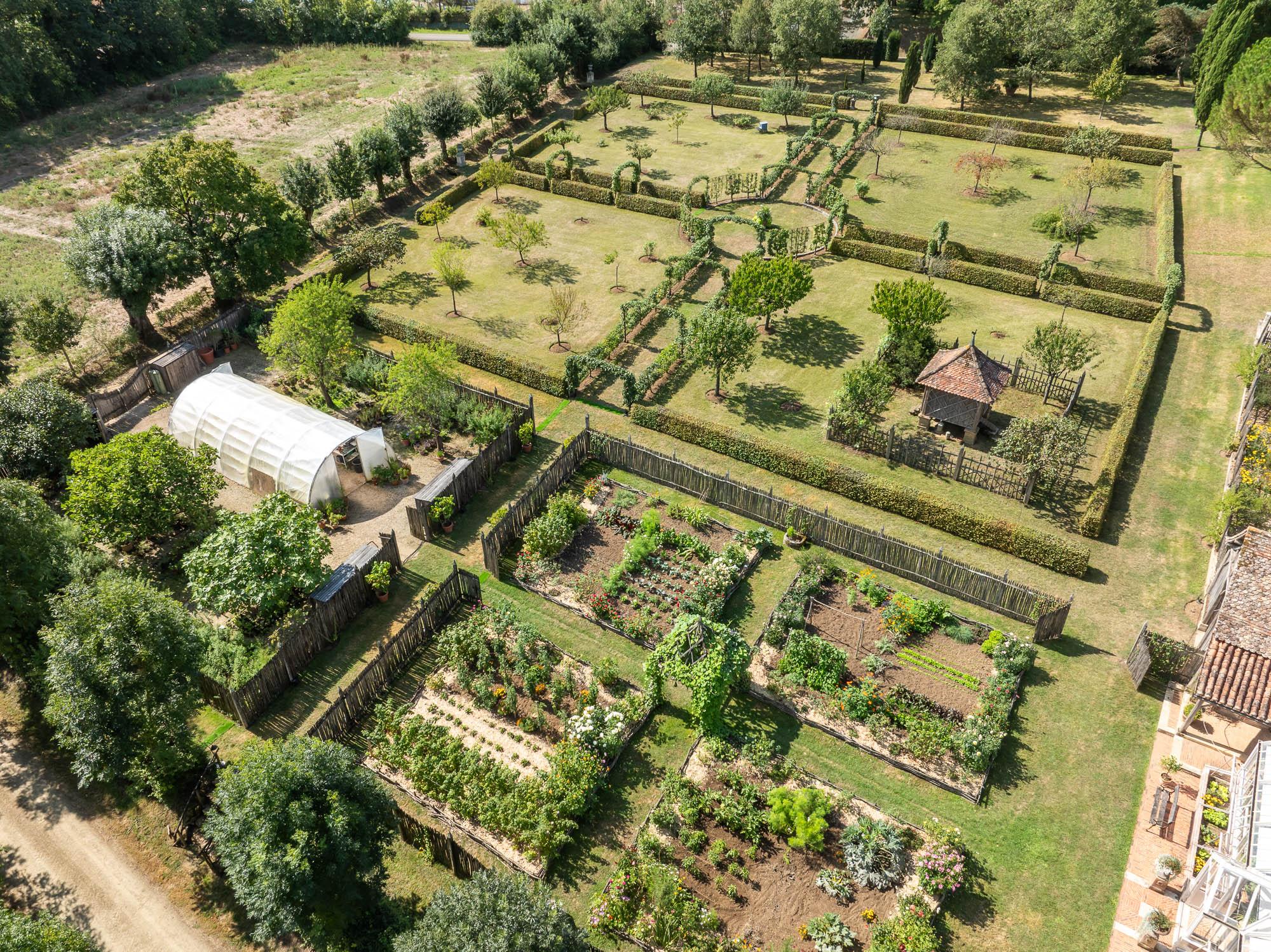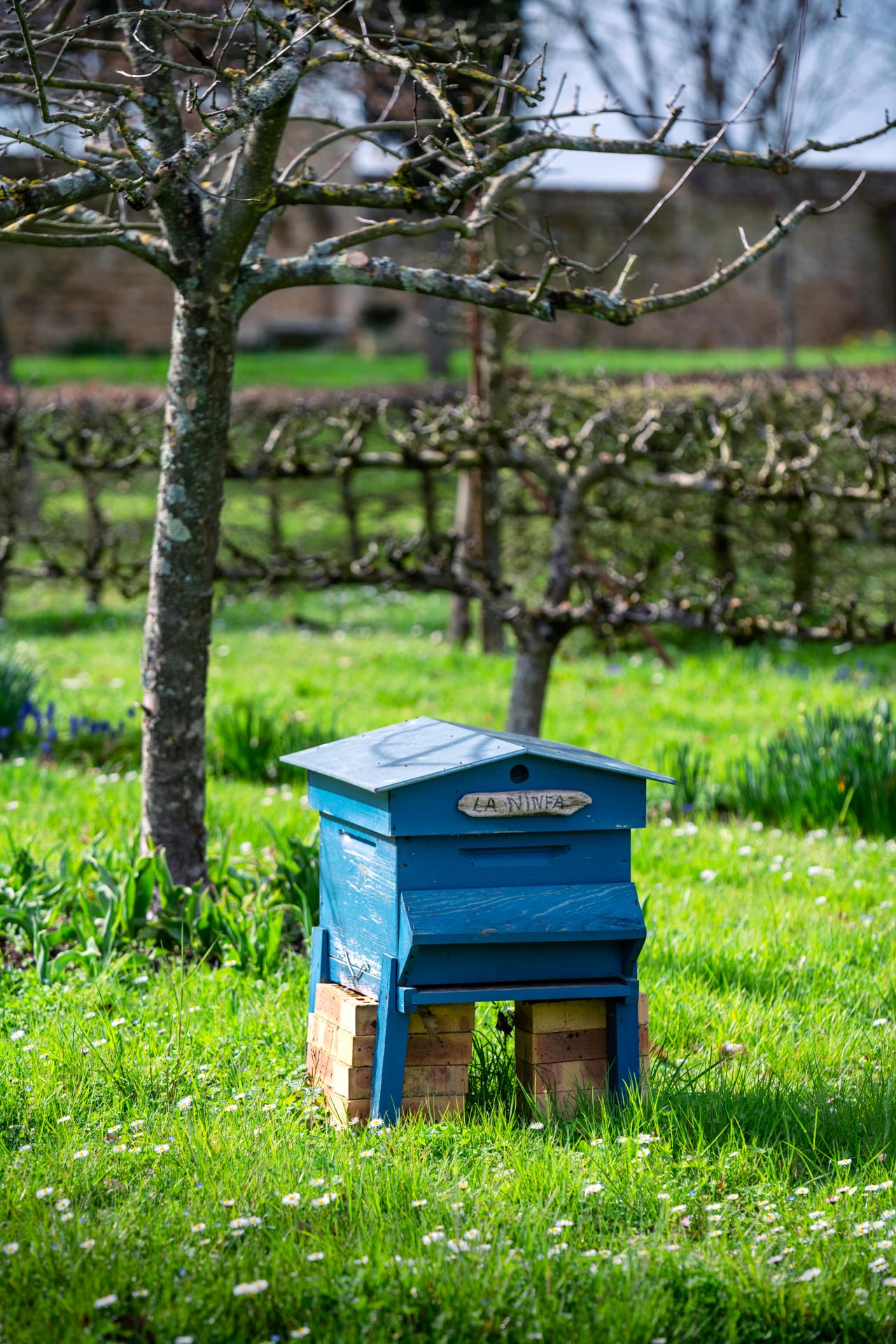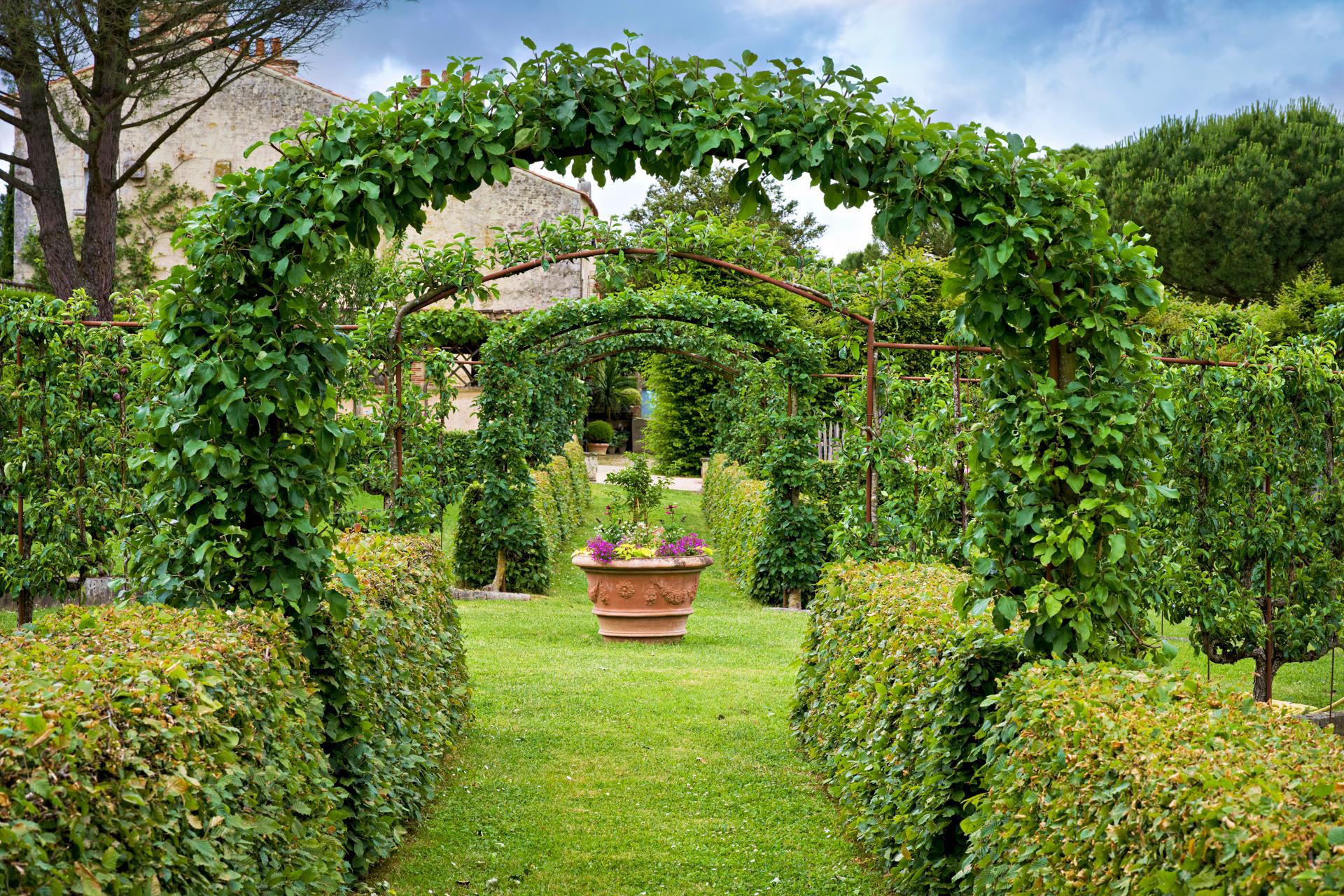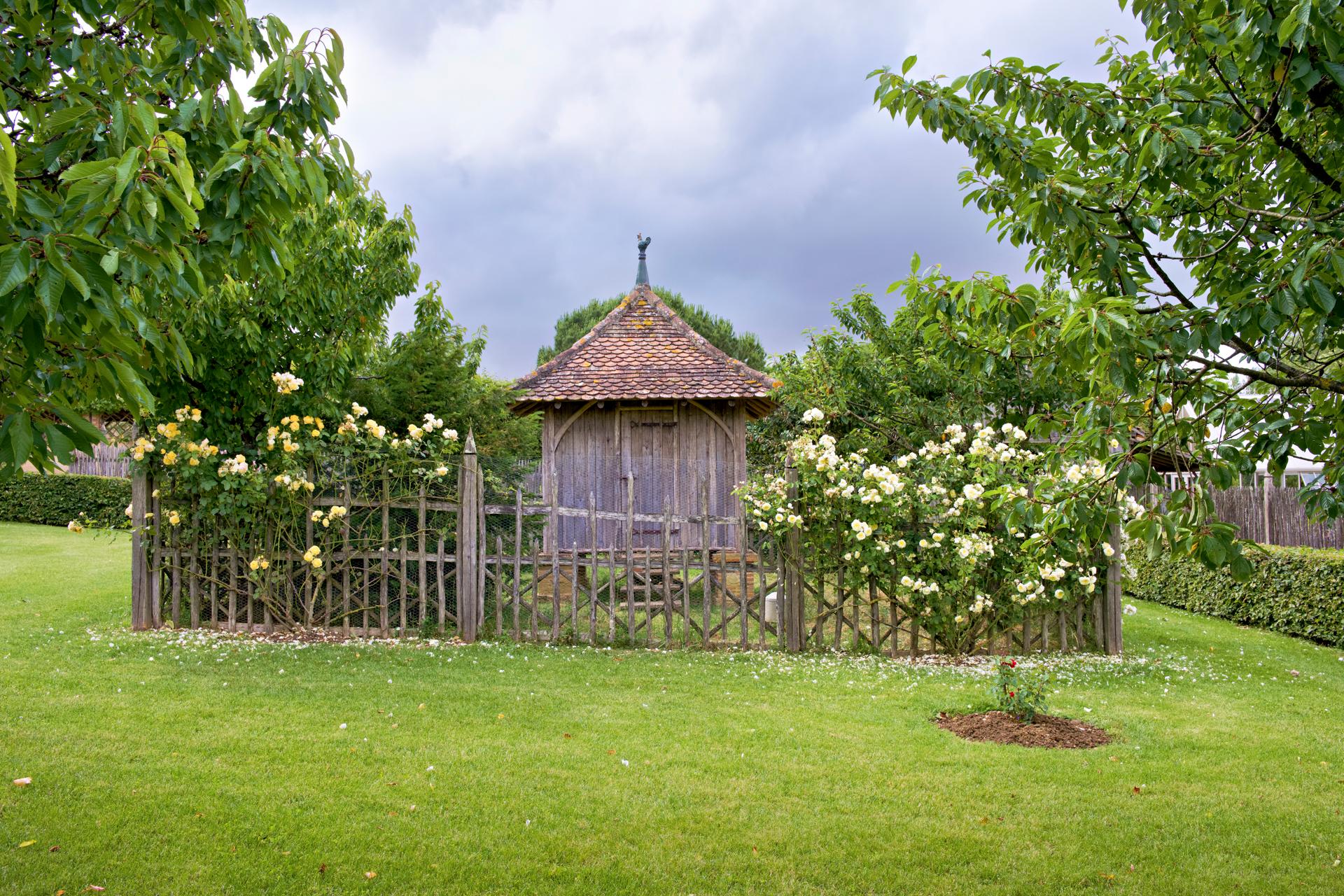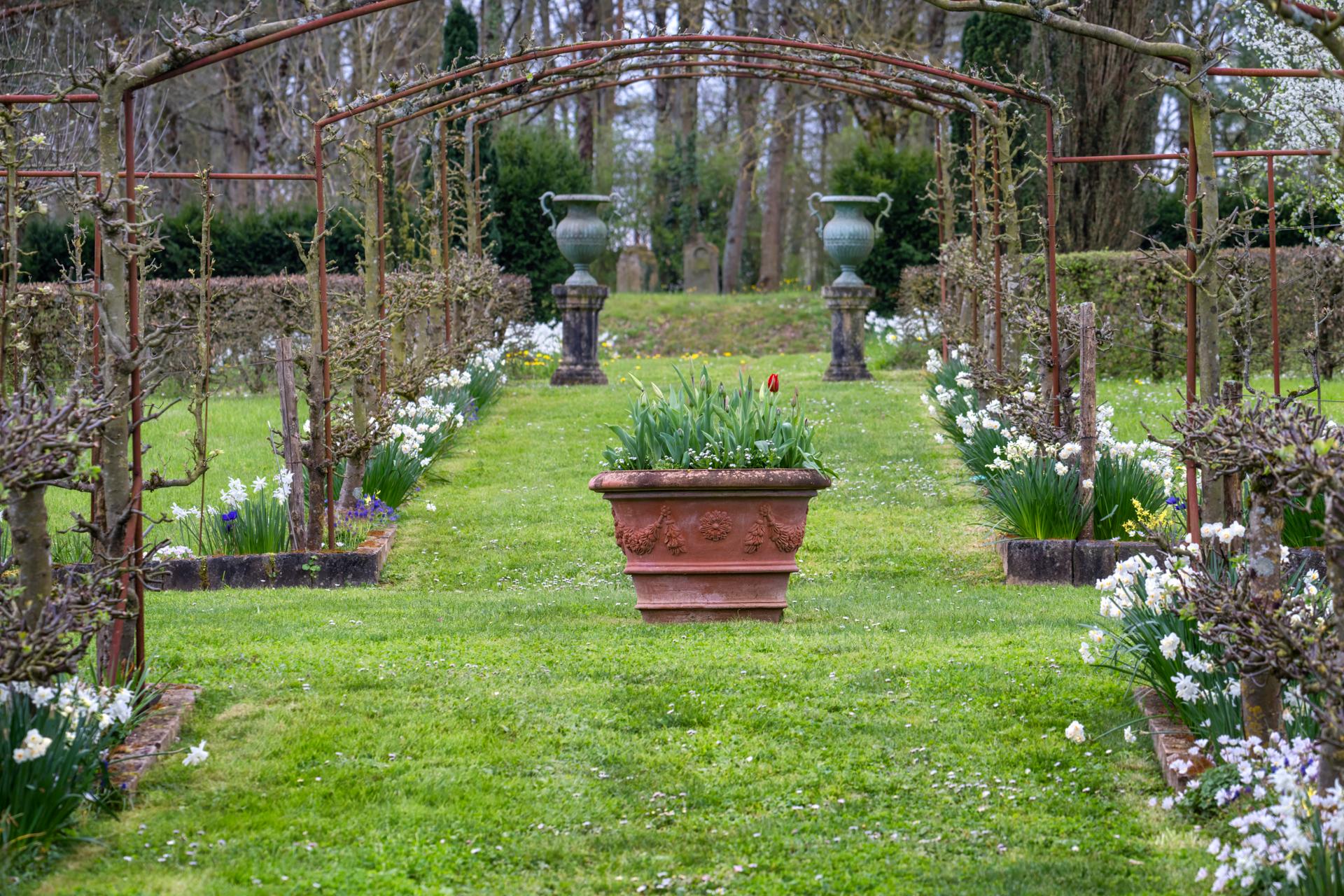Orchard
Though less well-known to visitors, the orchard is one of the largest spaces in the garden. This is no accident: for William Christie, the garden’s essential food-growing function nourishes both body and mind, and is appealing to the senses as well. Wandering through the well-defined paths in the orchard, between the fruit trees guided by elegant stakes, is it not like being in a garden of delicacies?

Between a pleasure for the senses, a utilitarian garden and a true work of horticultural art, the Verger des Jardins de William Christie is emblematic of the French garden.
Here, gardeners employ several ancestral skills: the art of espalier, palmette pruning and the double cordon apple tree.
The orchard is divided into four spaces by fruit trees pruned in palmette, i.e. following the pattern of palm leaves. This medieval technique produces flat trees and partitions the spaces. This form of tree is known as espalier, and its main advantage is that it stimulates fruit growth.
As for apple trees, they are also pruned into palms to create the double cordon technique. The design is formed by the two carpenter branches that grow from one side of the trunk to the other, overlapping each other on two levels. As well as encouraging fruit development, this technique makes picking easier, as all the fruit is within easy reach.
The Orchard, in William Christie's words:
The orchard is my most recent creation. I began designing it in 2005. My designs for the kitchen garden, the nursery, and the orchard respect the formal aspect of the entire garden. Perfectly symmetrical, they are laid out with paths that prolong the transversal axes of the rest of the garden in relation to the house. The four squares of the orchard are planted with cherry, plum, peach, pear, and quince trees, as well as with rose bushes.
Gardener's word
The allées of the orchard are lined with apple trees that are pruned to form a double horizontal cordon; the central circle are pear trees that are pruned in a form known as ‘palmette U double’. These traditional forms of pruning were originally used to maximise yields but are now valued for their aesthetic aspects.
John Hoyland, advisor for garden design at Glyndebourne and William Christie's friend
![logo des arts florissants z-[200]](/_next/static/media/logo-menu-black.27dda4ca.svg)

